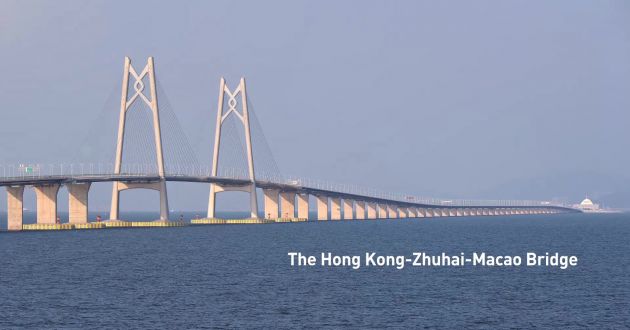The Hong Kong–Zhuhai–Macao Bridge (HZMB) is now open to traffic, and it is the world’s longest sea-crossing bridge at 55 km. Built at a reported cost of USD20 billion, the bridge is meant to make it easier for tourists and commuters to travel within the region.
According to officials, the crossing is made up of three sections starting with the 12-km Hong Kong Link Road, which features a 7-km undersea tunnel that runs between two artificial islands. This is to allow for ships to pass through on the Pearl River Delta where the bridge is based.
The main section of the itself is a dual three-lane carriageway that spans 30 km, and has three cable-styled bridges, namely Qingzhou Channel Bridge, Jianghai Channel Bridge and Jiuzhou Channel Bridge, with the first being the longest at 458 metres long. Finally, on the west side of the bridge is the 13-km Zhuhai Link Road that connects to the Chinese city of Zhuhai. The main bridge section took six years of preparation and nine years to build.
For the highlight reel, the bridge was designed to withstand earthquakes and typhoons, with around 420,000 tonnes of steel used in its construction, enough to build 60 Eiffel Towers. The bridge also has 700,000 square metres of road surface, equivalent to about 98 football fields.
The bridge also has special merger channels so drivers will be able to change which side of the road they are on at the crossing. This is because people drive on the left in Hong Kong and Macau, like in Malaysia, but over in China, motorists drive on the right.
As exciting as this engineering landmark is, private drivers who want to cross the bridge will need to obtain a special permit that is distributed via a stringent quota system. Those without a permit will follow a park and ride system, taking a shuttle bus or hire a private driver to carry them across the bridge, with trips costing around USD8-10.
Source: Read Full Article



